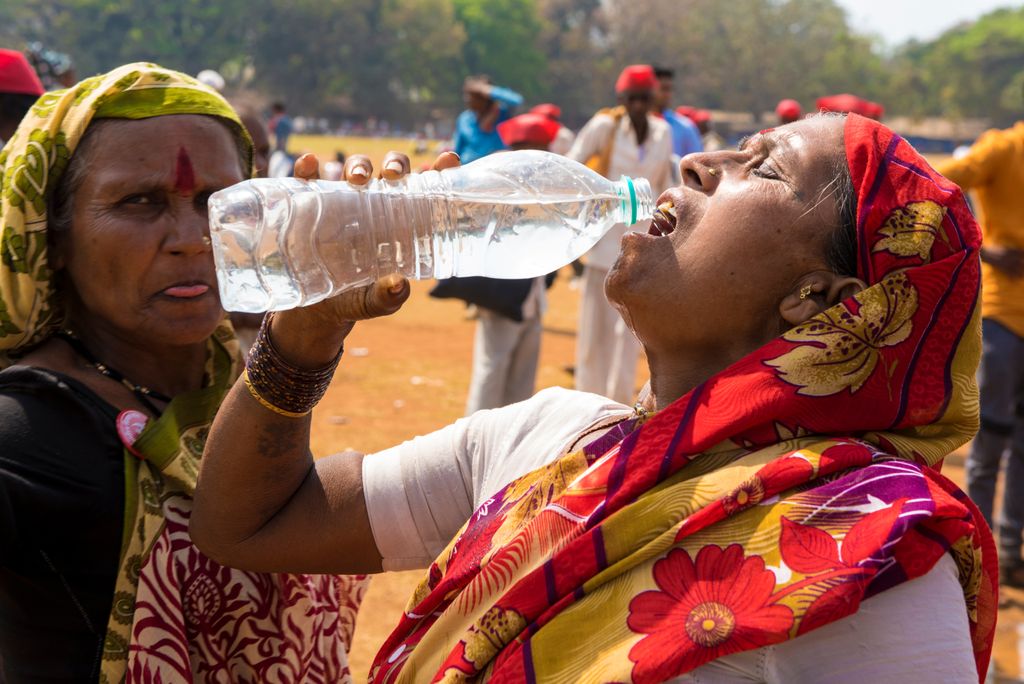Helping Women Adapt to Extreme Heat Helps Us All

by Jess Ayers, CEO, Quadrature Climate Foundation
and Helen Mountford, President and CEO, ClimateWorks Foundation
Climate shocks – from heat waves to droughts, floods to wildfires – often hit women the hardest. New research published this May in The Lancet found that even in wealthy European countries, women died at nearly twice the rate as men from extreme heat over the last two decades. According to Marcos Quijal, one of the report’s authors, the findings “reflect a global trend.”
In July, as heat records accumulated, causing even more deaths and economic damage, United Nations Secretary-General António Guterres called for international action to address what he described as our “global boiling.” But protecting vulnerable communities from extreme heat requires deep commitment and significant funding, both of which seem to be in short supply.
The flow of climate finance has traditionally been skewed toward emissions-reduction efforts and clean-energy projects, because adaptation measures are viewed as being too location-specific and hard to scale, as well as generating low returns. The UN Environment Programme’s 2023 Adaptation Gap Report found that climate-finance flows in 2021 amounted to only about one-tenth of the estimated $215-387 billion per year that developing countries need to meet their adaptation needs.
Philanthropic foundations, however, are catalysing investment by showing that adaptation is more scalable than previously thought. This summer, Climate Resilience for All, a global NGO focused on helping climate-vulnerable women build resilience, partnered with the Self-Employed Women’s Association (SEWA), a trade union for informal workers in India, and local insurance companies Swiss Re and ICICI Lombard. These public- and private-sector groups teamed up with philanthropies to buy low-cost heat-wave insurance for 50,000 members across 22 districts. As temperatures soared above 46° Celsius, every woman received a pay-out, averaging $12.38 per person.
For women with strenuous and precarious jobs, the money was crucial for weathering the extreme heat. It helped them feed their families and pay their children’s school fees when they couldn’t work, restock their shelves as perishables spoiled faster, and pay for treatment of heat-related injuries and illness. Such an intervention may seem trivial, but it is enough to protect vulnerable individuals from being driven into poverty by climate shocks.
“I enrolled 350 members. When they got ₹400 [just under $5], they said it was like ₹4000, as it came at a critical time of life. Some women repaid debts, others paid for their children’s education and bought fresh goods,” reported Sarojben, a grassroots leader of SEWA, adding, “It brings dignity to us.”
This pioneering insurance scheme is adaptation at its best: directly reaching those most in need when they need support the most. Moreover, the program is scalable and delivers significant social and economic benefits, enabling women to move up the development ladder and put themselves and their families on firmer financial footing.
Globally, women – including the leaders of SEWA, Climate Resilience for All, and many other organizations – have some of the best ideas for minimizing the effects of climate change, often based on their practical experience. Moreover, many of these solutions can be deployed at scale. But helping millions more women protect their livelihoods and their health in the face of unrelenting heat requires more funding.
Philanthropy is a start. As leaders of two of the world’s largest climate foundations, we are keenly aware of the important role it plays in encouraging effective solutions to the climate crisis. Unlike other investors, philanthropies can pursue and test innovative initiatives such as heat insurance and solar-reflective cool roofs. And this type of work is expanding: At the UN Climate Change Conference in Dubai, we came together with other philanthropies to launch the Adaptation and Resilience Funder Collaborative. In July, in response to Guterres’s call to action, this group of climate-, development-, and health-focused foundations committed an initial investment of $50 million to support adaptation measures.
But such an investment, while important, is a drop in the ocean compared to the adaptation-finance gap. All stakeholders, including governments, the private sector, civil-society organizations, and local communities, have a role to play in reducing the risks of extreme heat, protecting human health, and offering economic opportunities for everyone.
Building resilience to extreme heat is no easy feat, especially for the more than 500 million women in the informal economy. Innovative solutions such as heat insurance do exist, but philanthropies, governments, and private investors must work together to scale them up faster to counter the effects of rapidly rising temperatures. The payoff will be worth it, because boosting women’s climate resilience benefits us all.
This comment piece first appeared in Project Syndicate
 Jess Ayers
Jess Ayers